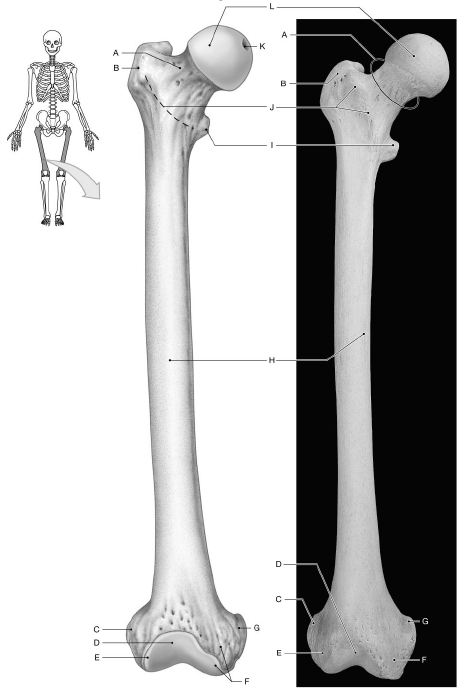Using the figure below, identify the labeled part.

1) Label A: ______________________________
2) Label B: ______________________________
3) Label C: ______________________________
4) Label D: ______________________________
5) Label E: ______________________________
6) Label F: ______________________________
7) Label G: ______________________________
8) Label H: ______________________________
9) Label I: ______________________________
10) Label J: ______________________________
11) Label K: ______________________________
12) Label L: ______________________________
1) Neck
2) Greater trochanter
3) Lateral epicondyle
4) Patellar surface
5) Lateral condyle
6) Medial condyle
7) Medial epicondyle
8) Shaft (body
9) Lesser trochanter
10) Intertrochanteric line
11) Fovea for ligament of head
12) Articular surface of head
You might also like to view...
For each of the following species, list the term for an intact female. goat
What will be an ideal response?
Answer the following statements true (T) or false (F)
1. Capillary blood pressure and plasma protein concentration have the opposite effects on interstitial fluid. 2. If plasma volume drops drastically, adequate circulation cannot be maintained. 3. Dehydration and overhydration occur in about equal frequency. 4. Prolonged vomiting can result in dehydration. 5. Middle-aged adults are at the greatest risk for dehydration caused by diarrhea.
Cadherins and integrins are examples of what type of membrane protein?
a. cell adhesion molecules (CAMs) b. collective additive molecules (CAMs) c. adhesive membrane proteins (AMPs) d. adhesive lipid molecules (ALMs) e. adhesive locking molecules (ALMs)
What is the atmospheric (barometric) pressure at sea level?
a. 660 mm Hg b. 700 mm Hg c. 720 mm Hg d. 760 mm Hg e. 860 mm Hg